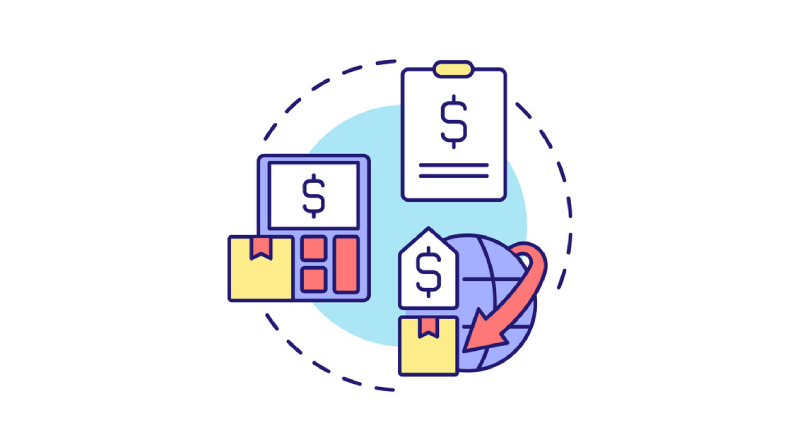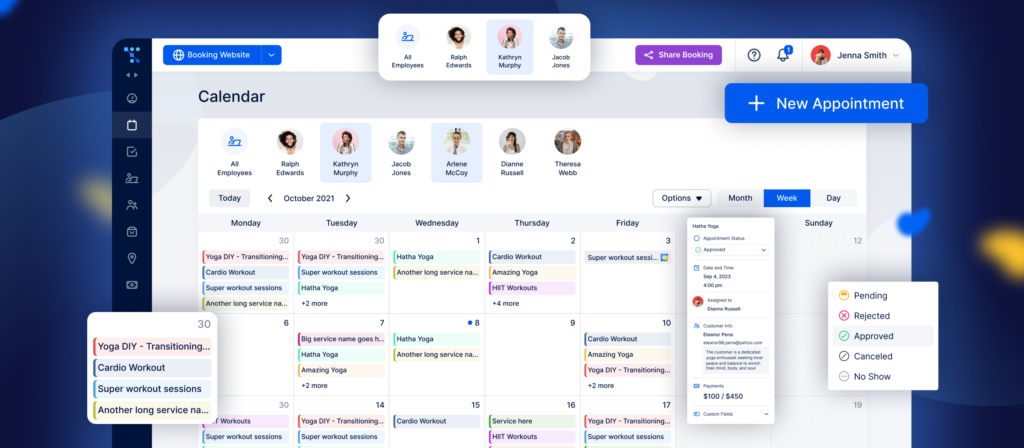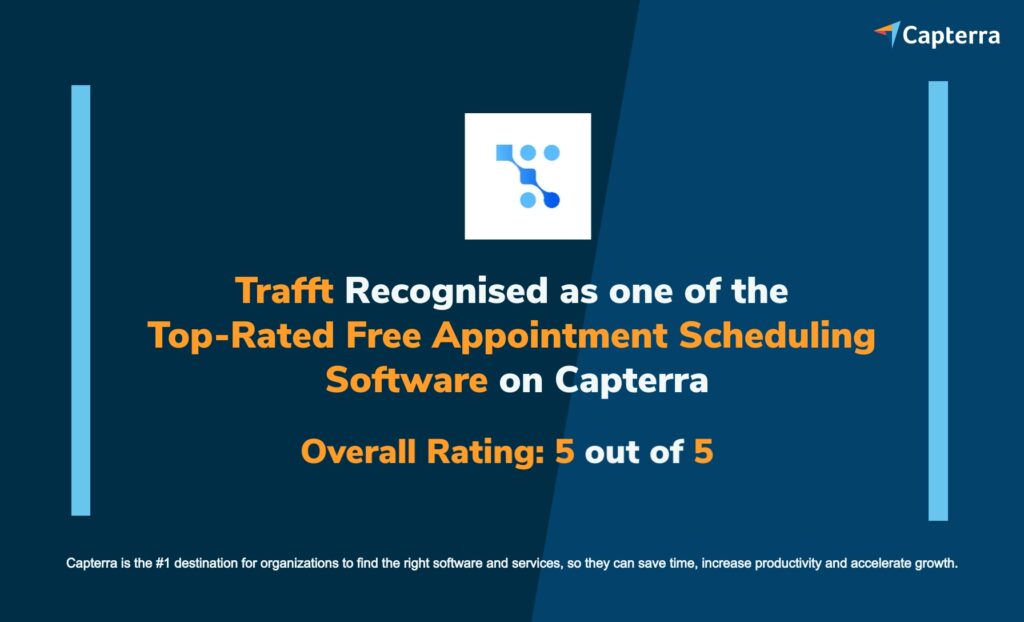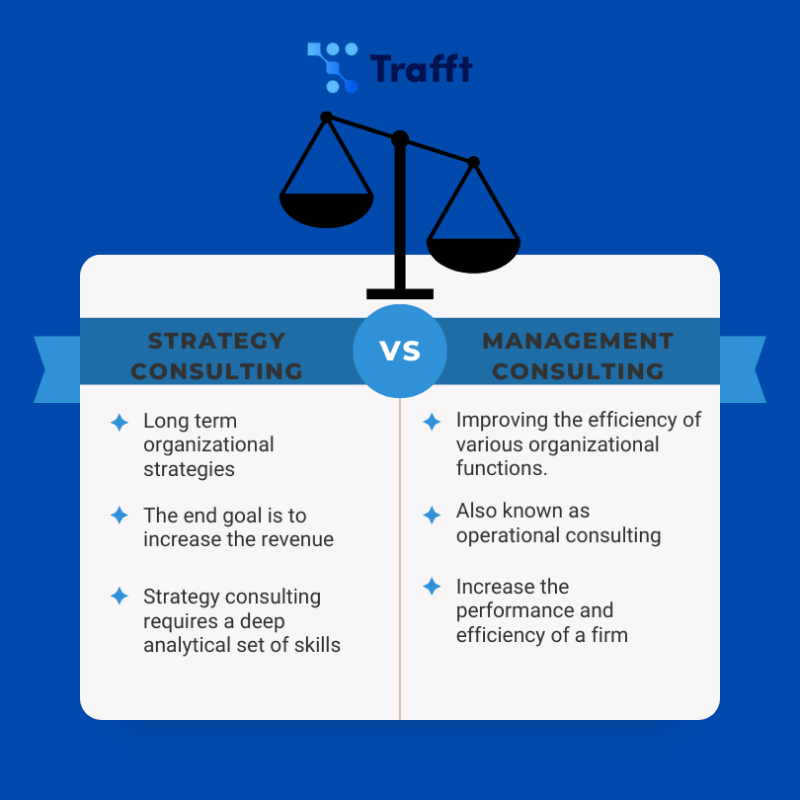If you’re starting your online consulting business, you’re probably wondering how much to charge as a consultant. We get you, accurate estimation of fees is vital. Charging too much or too little will be counterproductive, so it’s better to establish your consulting fees based on solid research.
When providing consulting services, you should make sure that clients are having a good experience. It helps if clients feel comfortable paying the stipulated amount.
Consider your skills and market rates are a start, but this is not all: several factors make a pricing model viable.
In this article, you’ll find information on how much to charge as a consultant. You’ll learn how to build a strategy, establish value-based pricing, and communicate with clients effectively. Check out this guide if you want to know more about consulting fee structure.
The Importance of Understanding Consulting Fee Structure
In the world of consulting, trust is everything. Clients want to know what they're paying for and how it aligns with the value they'll receive. A well-defined consulting fee structure fosters transparency, establishing a solid foundation for trust between you and your clients. This transparency can lead to long-term relationships and repeat business.
You need to understand that your expertise has value, and your consulting fee structure should reflect that. By clearly outlining your fees, you are communicating the value clients will receive in return. This alignment is crucial for both parties to understand and appreciate the worth of the services provided. It's not just about the cost; it's about the value added through your consulting services.
Another important factor you need to understand is that clarity in your fee structure helps manage client expectations from the beginning. It sets the stage for what services are included, additional costs, and the overall scope of your consulting engagement. This not only prevents misunderstandings but also allows you to deliver on promises without surprises along the way.
Your fee structure also plays a role in how you position yourself in the market. Too high may drive potential clients away, while too low may raise doubts about your expertise. Striking the right balance and justifying your pricing through a transparent fee structure positions you competitively in the online consulting market.
What to Consider When Charging for Your Consulting Services
Running a successful consulting business requires a strategic approach to both your services, marketing strategies, and pricing. Because of that, before you determine how much to charge as a consultant, you need to carefully analyze and understand the following factors that influence your consulting fee. What should you do?
Estimating your needs
If you want to be a full-time online consultant, there are several factors to consider. Maintaining your standard of living is key, so you need to calculate consulting fees accordingly.
What business expenses will you have? Do you need to rent an office? Can you run your consulting business from home? Will you have to sign up for memberships? Do you need to pay for any training or certifications? Do you need to acquire special software?
By knowing how much you’ll make, your expenses, and your living costs, you can set up your consulting fee structure. Remember that you need to maintain your living standards while keeping your business afloat.
Once you’ve established this, you’re ready for the next stage.
What is the value of my consulting business?
This is a key question to find out how much to charge as a consultant. Let’s assume that you have confidence in your ability to help people and get the desired results. If you know that your services bring value to people, you’re right at this stage. So, how do you figure out what these services are worth? The matter is not as simple as it sounds.
Although most people think that things have a specific set value, this is far from reality. A pricing model is an agreement between two parties. Therefore, how high or low the consulting rates will be depends on these parties.
Let’s imagine that you want to set up your consulting fees at $10,000 a day. Does it sound too high? If you manage to find a client that’s willing to pay this, that’s what your consulting services are worth.
This narrows it down to two questions: How much are new clients willing to pay for my services? How much am I willing to accept?
It all comes down to establishing consulting fees that meet your needs. However, a pricing model way above the standard will push potential clients away.
How much to charge as a consultant while deciding your workload
Every business owner is their own boss. Among other things, you can decide how much you’ll work. Naturally, this will impact your consulting rate.
Long-term consulting projects will take lots of time and resources. Hence, you may be getting a lower hourly rate overall. This may not be the case with shorter projects. However, one long-term project can give you more financial security than several smaller ones.
Here, the decision is only yours, but you need to consider this factor. A management consultant must take into account the estimated hours of all new projects.
The dangers of charging low fees
Experienced business people stress the importance of the seller. In other words, it’s not only about having great products but also the ability to deliver them.
Whatever consulting fees you charge, you must be confident. Otherwise, potential clients will be able to sense your uncertainty. Confidence is a key factor, and it’s not built in a single day. So, all the time you spend building up this confidence is a wise investment. However, don’t undervalue your consulting rates in the process.
If you’re wondering how much to charge as a consultant, here is some key advice:
- When fees are too low, clients won’t see you as a bargain.
- If you don’t value your own services, clients won’t either.
- As a result, you’ll undervalue the industry averages.
Consider the market rates
Naturally, you’ll be competing with other consultants, so it’s vital to know how much they charge. Also, you must find out what value they provide. When deciding how much to charge as a consultant, compare your skills and value with the average fees on the market. Thus, you’ll understand clients’ expectations.
In such a competitive landscape, it helps to stay in touch. By connecting with other management consultants, you’ll build a network. You never know when they will be too busy to take on new clients and willing to refer them to you.
Market research
Before settling on your consulting fees, conduct thorough market research. Understand the rates charged by other consultants in your niche and region. This not only helps you gauge industry standards but also positions you competitively in the market.
Specialized expertise
If you possess unique skills or specialize in a niche market, you can justify higher consulting fees. Clients are often willing to pay a premium for consultants who bring specialized knowledge and expertise to the table.
Client ROI
Highlight the return on investment (ROI) that clients can expect from your consulting services. If your expertise can lead to cost savings, revenue growth, or process improvements for your clients, it justifies a higher fee. Demonstrating the tangible value you bring can make clients more willing to invest in your services.
Flexible fee structures
Consider offering different fee structures based on the nature of the project. For instance, you might have a retainer fee for ongoing consulting services, project-based fees, or hourly rates for specific tasks. Providing flexibility in your fee structures accommodates diverse client needs.
Assessing client budgets
Understanding your potential clients' budgets is crucial. While you shouldn't undervalue your services, being aware of what clients are willing to invest can help you tailor your proposals and negotiate fees more effectively.
Incremental increases
As you gain experience and build a successful track record, don't hesitate to incrementally increase your consulting fees. Your expertise grows over time, and so should your compensation. Incremental increases reflect your growing value in the consulting market.
Choosing the Right Pricing Structure as a Consultant

Pricing models vary according to clients. While some prefer to pay a per-hour rate, others want to pay per project. Flexibility is key in this regard. Instead of choosing one single structure, be open to other possibilities. At the end of the day, what matters is that you’re getting fair remuneration. Thus, you can satisfy your salary expectations while keeping clients happy.
You’ll find that the per-project rate is popular, but there are other alternatives. You can choose from a monthly retainer, hourly fee, or weekly pay.
Hourly consulting rate
In this case, you estimate the hours spent on a client and then bill them accordingly. This is the simplest pricing structure, especially for a new consultant.
When you have your own consulting business, you also have many responsibilities and expenses. There’s no company or entity to compensate you for bookkeeping, tax filing, and healthcare. As a result, your hourly rate will be higher.
Three times the hourly rate
To establish their hourly rate, some consultants charge according to their estimations. They take the per-hour rate that they would earn working as an employee and double or triple it. Naturally, they add benefits too.
Some prefer to use the triple rate because it covers three stages: one-third is for the actual wage, the other third is for expenses, and the last third is for administration costs. Because it’s simple, this is one of the most popular pricing models.
For example, let’s estimate the hourly rate based on an employee’s average salary. This is a full-time employee earning $75,000 a year. Dividing the annual salary by the number of working weeks in the year, and dividing that by the number of working hours in the week will give you an hourly rate to start with.
(75,000 / 50) / 40 = $37.50/hour
37.5 x 3 = $112.50
So, $112.50 would be your hourly rate.
52-week pricing models
Although this method is more complicated, it’s worth a try. It works especially well when transitioning from a corporate job to your own consulting business. In this model, you would estimate your weekly pay in the following way:
- Establish the salary that you want to earn.
- Divide that number by 50 (the number of work weeks in a year, taking two weeks off) and then by 40 (the number of working hours in a week).
- Mark that number up by 25%-50%.
For instance, let’s assume that you want to make $60,000 a year. Divide 60,000 by 50 (approximately 1,154). Then, divide that figure by 40 (about 28.85). Then, mark this number up by 40%. The result is a rate of approximately $40 per hour.
The markup is meant to cover your training and business costs. This includes taxes, benefits, and additional expenses. The costs will vary according to your niche, tax responsibilities, country of residency, etc.
Experience the Future of Consultancy with Trafft: Your All-in-One Scheduling Solution

Discover the power of Trafft, the supreme scheduling software designed exclusively for consultants. Elevate your consultancy to new heights with a wealth of features meticulously crafted to enhance efficiency, save time, and boost your client base.
Key features
Online Scheduling & Payments: Effortlessly manage your appointments 24/7 with an intuitive online scheduling system. Securely process payments through trusted gateways like PayPal, Mollie, Stripe, or Authorize.net.
Automated Reminders: Keep your clients on track with automated reminders for scheduled consulting sessions.
Calendar Synchronization: Integrate seamlessly with Outlook, iCal, and Google Calendar, ensuring a centralized view of all your appointments.
Multiple Time Zones: Cater to a global clientele by easily managing appointments across different time zones.
How Trafft Works
- Set up Your Services and Availability: Create and customize your consulting services effortlessly, setting your availability for maximum flexibility.
- Customize Your Booking Website: Craft a polished booking page that reflects your brand, allowing clients to book with ease.
- Configure Payment Rules and Gateways: Tailor payment options to your liking, offering clients the convenience of secure on-site or online payments.
- Hold Booked Sessions: Execute your consulting sessions with confidence, whether on-site or virtually, using automated virtual meeting link sharing.
What Do You Get If You Choose Trafft?
- Reliable Booking Website: Even without a website, Trafft generates a professional booking page aligned with your brand. Easily share your booking link on social media or embed it on your existing website for seamless client interaction.
- Convenient 24/7 Booking: Improve customer experience with round-the-clock booking capabilities, enhancing satisfaction without the need for extra effort.
- Flexible Integrations: Seamlessly connect with popular coaching tools, including Google and Outlook calendars, Zoom, Google Meet, Zapier, and more. Integrate with SendFox and Mailchimp for effective communication and client engagement.
Why Wait? Use Trafft for Free and Revolutionize Your Consultancy Today

Join the 15,500+ successful business owners who have embraced Trafft and witnessed a transformative shift in their consultancy business. Sign up for a free now and experience the future of scheduling software for consultants!
P.S. Trafft is completely free for consulting businesses with up to 5 employees, you have nothing to lose!
Median hourly method
With this method, the first step is to find the median of what you earn compared to the market rate.
Thus, if you earn $65/hour and the market rate is $45/hour, the median rate is $55. Most consultants charge at least twice the median rate. However, this factor depends on your niche.
Project rates: How much should I charge?
The hourly method of charging has its drawbacks. One drawback is that it sometimes makes clients feel uncertain. If they don’t know exactly how much they will pay when going into a contract, it can stop them from moving forward.
Another thing to consider is that with time, you’ll get better at what you do and will learn to accomplish more in less time. As a result, you end up making less money as you become more efficient if you charge by the hour.
A project-based rate can be the solution to these issues.
Charging clients by the project rather than by the hour could help turn things around. By now, you know how much time a certain task would take you. Hence, you can estimate how much to charge as a consultant for a certain project. If you work on similar cases, you can work out a steady project rate. Here is a good formula to figure this out:
(The estimated hours to complete the project + 20% for unexpected situations) x hourly rate = per-project rate
Example: You have to develop a marketing plan for a new app. You estimate the process will take you 10 hours. Add 20% (two additional hours), in case you have difficulties. In total, you estimate a needed 12 hours to complete the project. Since your hourly rate is $40, multiply 12 by 40 to get your result. The project rate for building this marketing plan will be $480.
All in all, this works for both parties. While you get the rate that you deserve, the clients know exactly how much they will pay when they hire you.
ROI-based consulting fees
By basing your fees on an ROI, or return on investment, structure, you charge clients based on the value you provide. This can be tangible or intangible.
In this case, you don’t charge for your time or your deliveries: you charge for results. At the end of the day, this is what the client wants more than anything.
Value-based pricing is an art, and here is a guide on how to approach this strategy.
- Talk with your client.
- During this conversation, you find out that their goal is to gain three more clients per month.
- Each client is worth $500 for them, which gives you a number to work on.
- Before using this number, establish the intangible value (the project’s subjective factors).
For instance, you can ask the client what the desired outcome would do for them. Now, you know that they want three new clients each month. Moreover, each is worth $500 to the business. So, if you help them achieve this objective, you’ll be helping them earn $18,000 a month and $117,000 a year.
ROI formula: intangible value + tangible value + annual revenue = value-based pricing
Let’s say that you’ll help your clients increase their revenue by five percent in two years. Then, you must factor this growth into your plan. In line with this, if you generate $117,000 for the company, you can estimate your rate at different levels.
- 5% of $117,000 = $6,000
- 10% of $117,000 = $12,000
- 20% of $117,000 = $24,000
All in all, this pricing strategy is beneficial. It will bring you much more income and deliver results. However, this requires a highly qualified consultant.
Establishing a retainer fee for your consulting business
With a monthly retainer rate, you charge a fixed price for a certain number of hours. This usually works well with routine tasks. Consultants can have a steady income by charging a retainer fee, which may be valuable for a freelancer.
Keep in mind that clients will probably want to see your work before closing such an agreement. So, after a few months of charging a per-project rate or an hourly wage, you can move forward to the next stage. By that time, you’ll be acquainted with the client’s needs. On the other hand, the client will trust you. Offering them this payment structure is convenient for both parties.
A monthly retainer rate works better for certain jobs. For example, a graphic designer can provide a certain amount of deliverables per month. Likewise, an IT manager can charge for monthly monitoring services.
The downside is that you may end up working more to receive less. Therefore, it’s better to offer this deal to clients you’ve already worked with before. Setting up clear expectations is key within retainer pricing models.
Service packages
Consider creating predefined packages for your consulting services. These can include a mix of hourly, project-based, or retainer fees tailored to different client needs. Having packages simplifies the decision-making process for clients and can also showcase the range of services you offer.
Milestone-based payments
For larger projects, consider structuring payments based on milestones. This ensures that both you and the client have measurable checkpoints throughout the project, creating a sense of progress and accountability.
Client education
Some clients might not be familiar with the various pricing structures or the reasoning behind them. Consider including an informative section on your website or in your client proposals that educates them about the different models and helps them understand the value proposition associated with each.
Referral and loyalty programs
Consider implementing referral and loyalty programs. Reward clients who refer new business to you or engage in long-term partnerships with discounted rates or exclusive benefits. This encourages client loyalty and can contribute to a positive word-of-mouth reputation.
Communicating Your Consulting Fees to Clients
Talking about money can be uncomfortable. Therefore, consultants must have special skills when it comes to communication. You’ll have to discuss consulting fees with all your clients. So, if good communication doesn’t come naturally to you, you’d better start practicing. Be confident when it comes to your fee structure, and be as transparent as possible.
Negotiating with some clients will be harder, but this is something that you’ll learn with time. While some clients will have experience with consulting services, for others this will be their first time.
Keep in mind that, sometimes, compromising is necessary. For instance, the client’s budget may not be enough to pay for your fee. In this case, rather than rejecting them, try to negotiate.
During these conversations, you have the final word. Only you know how much time it took you to get where you are now. Naturally, you won’t give away your service for free. While you must be open to negotiation, always value your work. If you provide value, there will be more than one client ready to accept your fees. Having a high reputation and a stunning portfolio always helps.
Pro tip: Emphasize the value clients will receive by choosing a particular pricing structure. Whether it's the flexibility of hourly rates, the predictability of project-based fees, or the ongoing support provided by a retainer, clearly communicate how each option aligns with their business goals and offers value for their investment.
How Much to Charge as a Consultant: Average Fees
When starting your consulting business, make sure you research the average market rate. Remember that experience is a determining factor. Combine these two factors to establish your monthly fee or hourly rate.
As with any other job, pricing methods vary. It’s vital to know how much people are willing to pay for a certain set of skills. Rates range between a few tens and a few hundred dollars.
To calculate consulting fees, check out this average salary information:
Restaurant consultant fees: $103,425/year or an average of $50.00/hour
Marketing consultant: $74,852 /year or $36 /hour
Business consulting fees: $99,275 /year or $48 /hour
Human resources consulting fees: $77,861 /year or $37 /hour
Tax consulting fees: $92,750 /year or $45 /hour
The market rate is based on what clients are willing to pay for your expertise and skills. In other words, the numbers above indicate what people are paying for similar services.
While you may be able to charge three times the average, you must consider what’s affordable for potential clients. Even if you have the right set of skills, it’s no help to you if no one can afford them.
How Much to Charge as a Consultant: Final Thoughts
Deciding how much to charge as a consultant is no picnic. However, this process can help you measure the true value of your consulting business. Start by considering your needs and goals, and base your rates on this. Also, factor personal expenses into your pricing strategy.
No matter what method you choose, whether it’s a per-hour rate, monthly fee, or another pricing structure, you must base your decision on your skills and experience, and be confident that this is the right choice. All clients want to get results, and this is something that you can leverage to your benefit.
To summarize, establish how much you want to earn. Then, conduct market research and find out what your competition is offering. When choosing the right strategy for yourself, keep in mind that hourly fees are ideal for beginners, but as you become more efficient they can be detrimental.
Pricing per value is another great option, but you must make sure you deliver what you promised. Generally, this approach is for the most experienced consultants. Finally, if you have worked with a client for a long, you can offer them a retainer fee structure. Thus, you can deliver a certain amount of tasks/projects each month. You’ll get a fixed income, which is not to be underrated in the freelance world. Finally, use this guide wisely and you’ll be much closer to charging a fair fee.
FAQs About How Much to Charge as a Consultant
1. How do I determine my consulting rate?
You should think about your level of experience, your area of specialization, and the level of demand for your services in the market when figuring up your hourly rate as a consultant.
To get a basic notion of what other consultants are charging, you may also look for industry norms for your particular niche.
As you determine your rate, you might want to account for your overhead expenses like office space, supplies, and taxes.
2. What factors should I consider when setting my consulting fees?
You should take your level of experience, your area of specialty, your competition, and your target market into account when determining your consulting rates.
You should also take into account the value you provide to your clients as well as your overhead expenses, which include things like office space, tools, and taxes.
Also, depending on the project's intricacy, the amount of time needed, and the overall level of risk involved, you might wish to alter your prices.
3. Should I charge a flat fee or hourly rate for my consulting services?
The complexity of the project, the level of risk involved, and your client's budget are some examples of the elements that will determine whether you should bill a flat fee or an hourly cost for your consulting services.
Hourly rates may be more appropriate for projects that call for continuing support and collaboration, while flat costs may be more suited for well-defined projects with clear outcomes.
A hybrid strategy, such as a monthly retainer with additional hourly rates for extra work, is something else you might think about.
4. How do I ensure that I am charging a competitive rate as a consultant?
You can look up industry norms and compare your rates to those of your rivals to be sure you are billing a competitive rate as a consultant.
You may also conduct a study of your target market to determine how willing they are to pay for your services and then modify your pricing.
Always keep in mind the value you provide for your clients as well as the overall market need for your services.
5. Is it better to charge a lower rate and get more clients or a higher rate with fewer clients?
Depending on your business objectives and the nature of your services, you may find that charging less and attracting more customers is preferable to charging more and attracting fewer customers.
While setting cheaper prices may help you draw in more customers, it could also result in smaller profit margins and force you to take on more work in order to meet your revenue targets.
Yet, charging more may bring in fewer clients while bringing in more money for each job, which can enable you to offer a greater level of service.
6. How do I negotiate my consulting fees with potential clients?
You should concentrate on explaining the value you provide to their project and comprehending their financial limits when negotiating your consulting fees with prospective clients.
You could start by offering the client a choice between a variety of rates based on various project scopes or deliverables and asking them which they prefer.
You might also think about bundling various services or providing a discount in exchange for a long-term commitment.
7. What additional costs should I include in my consulting fees (e.g. travel expenses, materials, etc.)?
You should take into account any additional charges you could have, including travel costs, material prices, or software subscriptions, when determining your consulting rates.
Make sure your rates cover both your desired profit margin and your business expenses, including overhead costs like office space, equipment, and taxes.
8. How can I increase my consulting fees over time as I gain more experience?
By honing your skills and establishing a track record for providing high-caliber services, you may gradually raise your consulting prices.
Also, you can modify your costs based on the demand for your services in the market and periodically review your charges to make sure they are compliant with industry norms.
Also, you might think about charging more for your services or bundling them with other consulting services.
9. What are the industry standards for consulting fees in my area?
Depending on your industry and location, consulting costs can differ significantly. It's crucial to look into local industry norms to get a sense of what other consultants are charging in your field.
Also, take into account things like your level of experience, the size and scope of your projects, and the value you provide to your clients.
Also, it's a good idea to constantly review your costs to make sure they remain reasonable and match the needs of the marketplace.
10. Should I offer different rates for different types of consulting services I offer?
Providing varied fees for various consulting services might be a smart move, especially if you offer a wide range of products or services.
For instance, you could wish to charge more for services that are more complicated or specialized while charging less for work that is more routine. Also, you might think about providing bundles or a discount for long-term commitments.
It's critical to be transparent with your customers on your pricing policy and to make sure that your charges accurately represent the value you deliver.
11. How do freelance consultants charge?
Freelance consultants employ diverse charging models, including hourly rates, project-based fees, retainers, and value-based pricing. The choice depends on factors like project complexity and client preferences, aiming for transparency and mutual benefit in determining compensation.
Ready to Dive in for More Fun?
Check out these extra resources to uncover all the details about the consulting business:
- How to Get Clients as a Consultant
- How to Run a Consulting Business & Be Successful
- How to Promote Your Consulting Business? From A-Z
- The Most Effective Marketing Strategies for Consultants
- How to Become an Independent Consultant
- What is a Business Automation Consultant and How You Can Be One
- How to Become a Tax Consultant and Be Great at It






